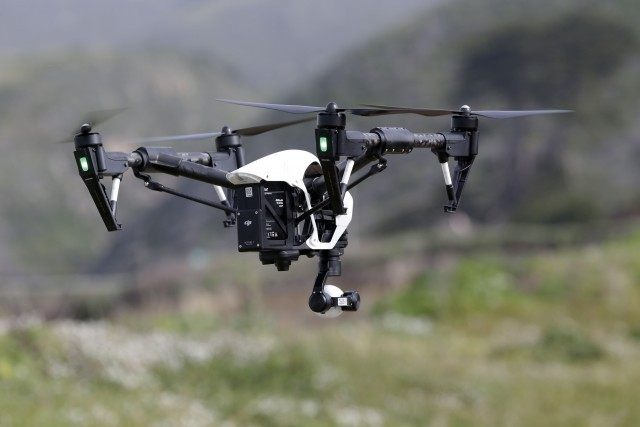Californians could soon see drones irrigating or dusting crops. Amazon and Google told the Wall Street Journal they have recently seen a major shift in the attitude of the Federal Aviation Administration (FAA) regarding critical issues to accelerate commercial drone test flights that extend beyond the sight of the operator.
The FAA change is the key to a potentially massive increase in the speed and reduction in cost for retail package and restaurant food delivery. Drone use will also expand rapidly for large commercial infrastructure inspection and management applications.
The FAA announced plans today for an initiative to study drone flights beyond the sight of the operator. The agency had basically banned the practice, with few exceptions.
The only FAA large-scale beyond-sight drone flight approval is for a Boeing Co. subsidiary and U.S. Customs and Border Protection officials to operate drones beyond sight off the coast of Alaska and along U.S. borders.
The more open attitude announced Wednesday follows a February 15 announcement by the Department of Transportation’s Federal Aviation Administration that tit was considering a proposed framework of regulations to facilitate integrating unmanned-aerial-systems (UAS) under 55 pounds into U.S. aviation system. The FAA proposal would have limited UAS non-recreational flights to daylight and visual-line-of-sight operations. It also addresses height restrictions, operator certification, optional use of a visual observer, aircraft registration and marking, and operational limits.
The February proposal also announced that the FAA was asking for “comment” about a more flexible framework that might have exempted “micro” UAS under 4.4 pounds from the visual-line-of-sight regulation.
As a corporate strategy, Amazon.com has gone all-in for the future of drone delivery. Last month it hired Sean Cassidy, the former number-two executive at the Air Line Pilots Association, as well as an Alaska Air Group Inc. pilot and former member of a Transportation Security Administration aviation-security advisory committee. His job will be to lead Amazon’s effort to convince FAA regulators to approve widespread commercial use of drones.
Despite the activity being mostly illegal, the L.A. Memorial Sports Arena in December hosted the commercial drone industry’s first business expo for what hosts promised will soon be a multi-billion dollar American-based industry. Thousand people flocked to the all-day event that featured the best film shooters and drone flyers Hollywood and action sports media can offer. Top manufactures and experts from Berkeley, Stanford and MIT gave lectures on new technologies and applications. Dozens of drones flew around the arena as head-banger music blared and new video games incorporating drones were launched.
About 95% of worldwide unmanned-aerial-vehicle flights in 2012 were operated by the U.S. military, with a sprinkling from France, U.K., Germany, India, and Israel. But today there are tens of thousands of military drones and several million commercial and personal drones operating in numerous countries around the world.
U.S. sales are increasing fast as the drones become cheaper, more powerful, and easier to fly. Amazon offers dozens of brands with prices starting at under $50. DroneFly, in its second year of operations, advertises they sold over $9 million in drones in 2013–its first year of operation. This year, the company is set to triple that.
THe FAA in October gave six film companies permission to use drones, bringing approvals for a nation of 318 million people to a total of eight commercial drone operations. That compares to European Union members that have thousands of legal commercial done operations. Berlin based Service-drone.de GmbH Berlin has sold more than 400 unmanned aircraft to private-sector companies and is working on a release of its 4th generation device.
There have been serious close calls between drones and passenger jets crossing paths. There are plenty of videos on YouTube about “flyaway” when drones lose Wi-Fi connections or suffer from faulty programming and crash. The FAA has also been worried that commercial drones using GPS navigation could be hijacked in-air as terrorist weapons.
Iran famously hacked and captured a U.S. Scan Eagle drone in December, 2012. Their elite Revolutionary Guard cyber-war team has reverse engineered the spy drone and is now selling the technology to a number of countries that are adversaries to the U.S, including Russia. The head of the Russian air force has stated that Iran intends to mass-produce sophisticated drones for export as a symbol of their technical capabilities, according to the semi-official Fars news agency.
With the United States dominating the development and use of drones, despite antiquated regulations, the FAA’s momentum toward setting a commercial regulatory structure will accelerate an already a booming entrepreneurial-driven industry.

COMMENTS
Please let us know if you're having issues with commenting.